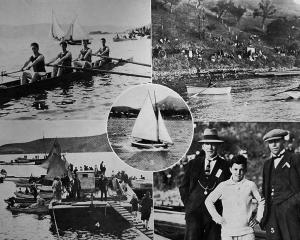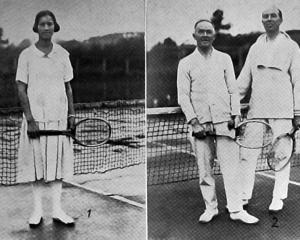We are credibly informed that trout poaching is rampant at the present time in the Silverstream, in the vicinity of Mosgiel and Outram.
The fish are now finding their way up the stream to spawn, and as the water is very clear, the spawning fish lying on the shallow sandy reaches are easily discerned. The poacher with a spear has thus no difficulty in landing the practically helpless fish, and many fine specimens are being secured in this despicable manner. One man was observed the other day walking off with a sugar bag full of speared fish, and he is only one of many who are employing this nefarious method of poaching. The depredations amongst the spawning fish are stated to be so great, that in some instances they are being salted down for consumption later on. Meanwhile the officers of the Otago Acclimatisation Society are busily engaged stripping the ova from the fish in the Leith with the object of supplementing the supply of trout in the rivers and lakes in the province.
• Messrs. A. Moritzson and Co. are at present exhibiting at their office several new importations of three-ply timber. Under a new process, perfected in Germany, the timber is peeled off the log in sheets of about one to two m.m. thick. This is then cut into sizes, and three layers of the shavings are glued together under hydraulic pressure. The edges of these sheets are trimmed and afterwards scraped and polished. An inspection of the sheets, which are beautifully polished and stained, would lead one to believe that this three-ply timber will supply a much-felt want for architects, builders, and people who would like to see their decorations carried out with woods in their natural colours and displaying the grain of the tree.
Anyone interested is at liberty to call and view the new article.
• The existence of true gem opal at Tairua, on the eastern coast of the Hauraki Peninsula has been known for some years, says a Press Association message, but owing to the opal bearing country being privately owned very little has been done in the way of developing the deposit. Quite recently, however, considerable activity has been shown in this direction. The property has been acquired for mining purposes, and already a considerable quantity of high class opals have been secured.
The leading jewellers report very highly upon them and are satisfied that they have a good market value.
• To show the hardship settlers and delivery carts have to put up with in the Whangamomona district, one driver remarked that he would not get home under two hours, a distance of five miles (writes the Stratford Post).
Mr C. Meredith, while driving his cart, containing bread, a quarter of a mile from the township, got his shafter into difficulties, and all he could do was to place some pungas under the horse's head to keep it from getting suffocated in the mud.
• Mr Charles Robinson's white pine sawmill, near Waimahaka, is turning out a considerable quantity of timber (says the Southland Times). The mill is very conveniently situated on the banks of the Titiroa, the white pine growing in a thick belt right up to the river bank and thence to the Mataura.
The logs are put into the water, "dogged" together into rafts of from 40 to 50 logs, and floated down to the mill, where they are winched from the water on to the saw benches. The Titiroa being a tidal river, the logs can either be brought up or down stream as required.- ODT, 5.7.1912.












